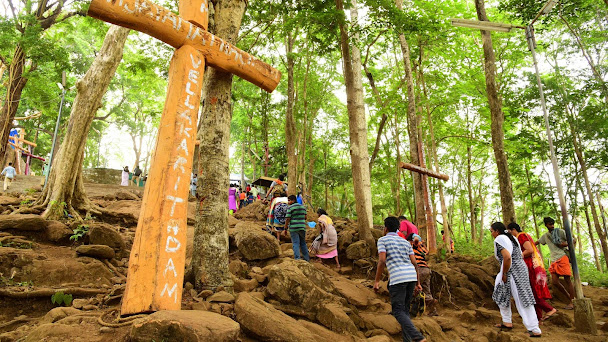Thazhathangady Juma Masjid: A beautiful structure
In Kerala there are many places which are termed as heritage circuits & one such place is the Kottayam town which has some of the most important structures of heritage value. The Thazhathangady Juma masjid or Taj Juma masjid as it is known here is one such important heritage structure. The story of its origin & the beauty of its architecture is important for all to know. The mosque even today stands proudly along the backs of the meenachil river & is an iconic structure of Kottayam.
Malik Dinar is the person responsible for bringing Islam to India & Kerala was the place he came first. He came to the shores of Kodungallur in the 7th century & spread the word of the Prophet. It was his son Habib Dinar who further propagated the message of Islam & is said to have built many mosques in the 8th century. The Thazhathangady Juma Masjid is one among these & possibly one of the most beautiful. It is also important to know that as per historians the erstwhile Thekkumkoor kingdom ruled around the time & they established Kottayam as their capital. The land & men needed for the construction of this mosque is said to have been provided by the kings. The mosque at first glance looks more like a temple than a mosque & it was a common feature at the time as the blueprint of the temple was only available for the craftsman as reference. The other unique sight at the mosque is the presence of a pond which is usually only found next to a temple. The structure of the mosque has many important & unique features which can be seen as one enters the building.
The whole structure is devoid of any minarets or domes, a usual sight at mosques. The structure is a two tiered building & is completely finished with timber pillars & wooden panels. The mosque has a mukhappu with a balcony at the front & this is a design seen in most of the erstwhile Kerala palaces. The front balcony is also adorned with wooden work completed with colourful gables & a small window (killivaadil) used to see the front of the mosque by the qasi of the mosque. As one enters the mosque, the first thing is the water aqueduct which is a work of marvel as it is made of one single rock & the water is collected from a well. The inside lower tier of the mosque is a beautiful place which defines the exemplary craftsmanship of the carpenters of the time. The whole structure stands on 12 timber pillars which have carvings on it & the lower floor is divided by a wooden wall into two parts; the outer section is called purampally & the inside is called akkampally. The purampally has two pillars, akkampally has four & the central wall contains the remaining two pillars. It is quite interesting to know that the mosque is beautifully decorated inside with carved motifs & flowers on the roof. The purampally is a smaller area which is more like an entrance quarters to the actual prayer hall & has a stair which goes to the upper tier which was used earlier by the qasi as a living quarters. The wooden wall has three doors, the central opening is the main door which connects the two areas while there are two smaller doors on the sides. The door on the side has the unique distinction of having the mukooti saksha (3 pinned wooden lock) which is quite rare to find. This lock is a special woodwork where it is locked using a single push but can be opened only by sliding each wooden finger. The other door also has the famous manichitrathazhu lock system which was commonly found in the traditional Kerala houses. The door frames on the side of the mosque are not made of wood but rather have stone frame with wooden doors attached to them. The Akkampally is the larger area & it is where the intricate woodwork can be seen. The mimbrah at the centre & the mihrab (pulpit) made of wood is at one end of the room. The upper tier also is accessed as a large hall where young students were taught in the earlier days. The hall on the upper tier is now not used but it is also a place where one can see the intelligently done wooden framing of the whole structure along with the upper portion of the eight pillars which hold the structure together.
The wooden wall inside the mosque is also a place where one can see the writings from the Quran, words of the prophet & a poem in Arabic. The pond within the complex is still used for rituals & the devotees do wash their feet upon arrival at the mosque. The mosque also allows people from other faiths. The mosque is also a place where one can find a sundial which was & is still used to accurately predict the time of the holy prayers. The tomb of Malik Dinar & the mason who built the mosque can be seen in the complex.
The Thazhathangady mosque was not just a place of worship for the muslims here but it also became a place of importance during the freedom struggle as a venue for discussions. The mosque has been renovated many times in its history but the people have kept its aesthetics intact even today & in many ways is a place to visit not just to see the beauty of the structure but also to understand the value it provides.
.jpeg)



Comments
Post a Comment